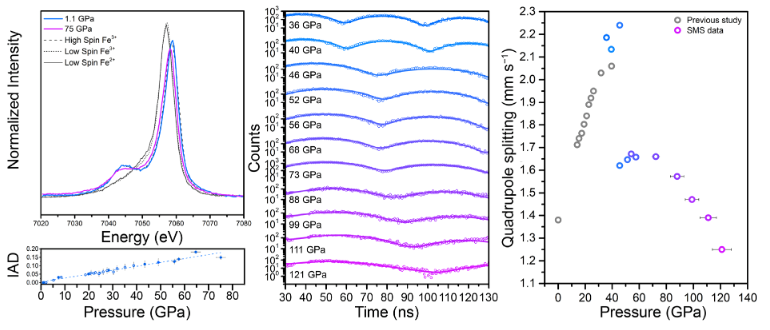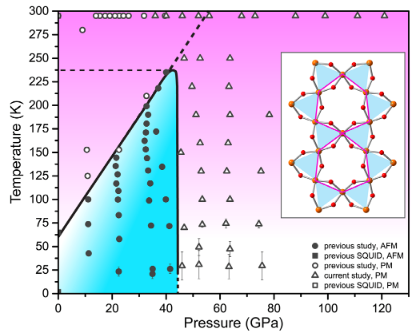Prof. Danna Freedman (Northwestern University) and team show Pressure-Induced Collapse of Magnetic Order in Jarosite in the recent PRL 125, 077202 (2020) publication
Finding new exotic magnetic states arising from geometric frustration is a central focus in condensed matter physics today. One such state, marked by the absence of long-range magnetic ordering in the presence of strong magnetic coupling—even at absolute zero temperature—is the quantum spin liquid. High applied pressures offer several avenues to tune magnetic properties towards new exotic magnetic states. As increasing pressure modifies bond lengths, magnetic coupling interactions can be tuned towards a quantum critical point. Additionally, high pressure can stabilize metastable phases with new types of geometrically frustrated lattices that are synthetically intractable at ambient conditions, such as the twisted kagomé lattice. In Pressure-Induced Collapse of Magnetic Order in Jarosite, the authors compress the magnetically frustrated mineral jarosite, KFe3(OH)6(SO4)2, which possesses high-spin Fe3+ ions on a kagomé lattice, to over a megabar in applied pressure. Using a suite of high-pressure, low-temperature techniques available at HPCAT, including PXRD, NRFS, and XES, the authors show that the long-range magnetic ordering in jarosite abruptly disappears below the temperature limit of detection across a pressure-induced phase transition at ~45 GPa. By combining the results of their PXRD, FTIR, and DFT studies, the authors show that the high-pressure phase of jarosite possesses a rare, magnetically frustrated twisted kagomé lattice. The authors argue that the antisymmetric Dzyaloshinski-Moriya exchange interaction vanishes across the transition, leading to the collapse of long-range magnetic order. Whether this high-pressure phase is a new exotic state of matter requires further investigation.



